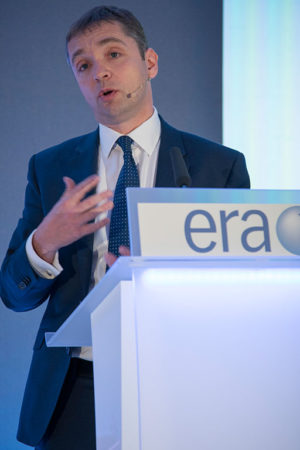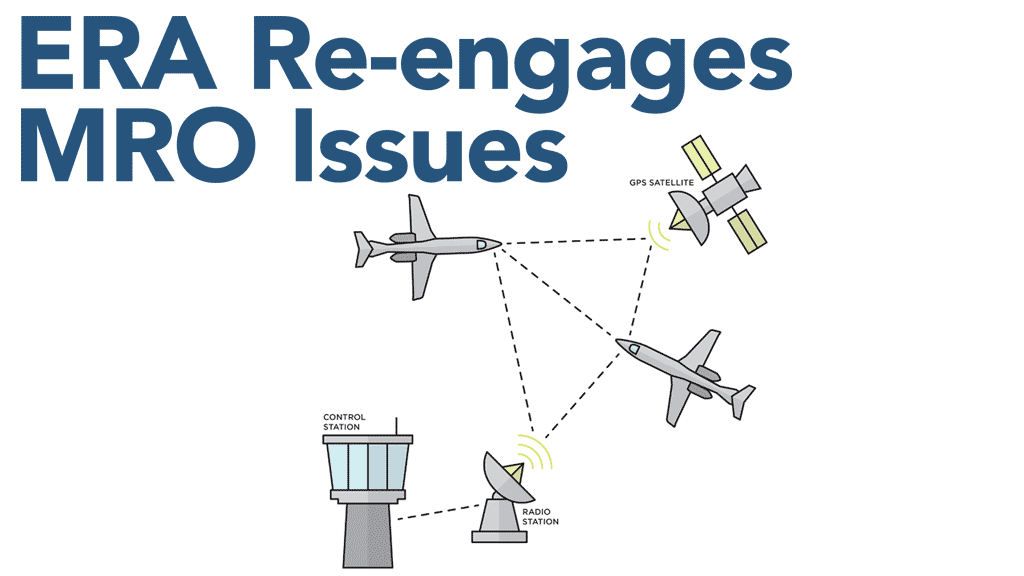Bernie Baldwin talks to the ERA’s director general, Simon McNamara, on his plans to push the organisation towards greater involvement in MRO before he heads to pastures new.
Impending departure from his role as director general of the European Regions Airline Association (ERA), a post that he has held for the last four years, isn’t stopping Simon McNamara from pursuing initiatives to expand the organisation’s influence. And maintenance is an area in which he foresees greater ERA involvement.
“At present, we have what we call a virtual maintenance group, which meets by correspondence, by conference calls,” explained McNamara, who will become communications director at Flybe in a few months. “We are trying to inject a bit of new life into it, because it’s relatively dormant right now.
“Among the European trade bodies, there’s not as much activity in maintenance representation as I think there could be. It’s not because there’s a lack of issues; there are constant issues such as Part 145 approvals, changes in EU legislation,” plus other major areas such as licensing of maintenance personnel.

The ERA has a growing number of MRO supplier members alongside airline members, providing the opportunity to come together on maintenance and safety and share information. “It’s also very rulemaking-driven as well,” the DG notes. “There is a lot of European legislation on maintenance standards. EASA is constantly working away on maintenance issues and that’s where we want to be involved, because EASA will keep working.”
The EU Ramp Inspection Programme (SAFA/SACA) is another area where ERA is involved. “These are random inspections, where if you fly into [an outstation] you can be inspected by a local inspector. They’ll inspect the aircraft and can ultimately ground the aircraft if they are not satisfied with its condition
or paperwork.
“We are active in that area, because we see inconsistent application of the inspections across different [EU] Member States, which causes problems when one particular inspector will ground an aircraft for an engineering reason, where another would not ground it. So there is inconsistent application of standards there.”
Supply chain management is also where ERA has a role as many airline members fly out-of-production aircraft such as Jetstreams, Fokkers, Avros and Saabs. “Over the past two years we’ve facilitated an annual meeting of the out-of-production Type Certificate holders,” states McNamara. “We asked them, ‘What can we do as an Association to help you keep those aircraft flying?’, because they still form a significant part of, particularly, the sub-50-seat market and probably will for some considerable time. The meetings are more about information exchange [at present] rather than coming up with concrete proposals. We’re planning a further meeting at our General Assembly in October.”
Upcoming avionics requirements and the associated modification work also interest the Association. “It’s a challenge with some of these new mandates and new avionics, because generally speaking the older the aircraft, the more complicated it is to integrate,” McNamara observed. “We are very active on CPDLC (controller–pilot datalink communications) and Surveillance, Performance and Interoperability (SPI) implementation, which primarily comes down to ADS-B Out equipage on which there is an imminent mandate coming up. Retrofit aircraft should be compliant by December 2017. So [carriers with such aircraft] should be fitting ADS-B Out by then, but the fact of the matter is that there are very few ground stations ready to receive ADS-B Out or even use it.
“It’s something of a shambles,” he asserted. “As usual, airlines are working to be compliant, but the ground air traffic service providers don’t have an equivalent mandate system, so they are very behind schedule. As such we are actively working with EASA to find a solution that will provide a longer transitional arrangement for equipage.”
With new aircraft only having to be ADS-B Out equipped from 2020, McNamara believes it makes sense to re-look at this area. “We’re pushing quite hard but we’re very much in the hands of EASA to weigh up all the pros and cons of the argument we make.”
Some might say it’s all unfinished business, but McNamara is clearly creating a well-paved path for his successor.
